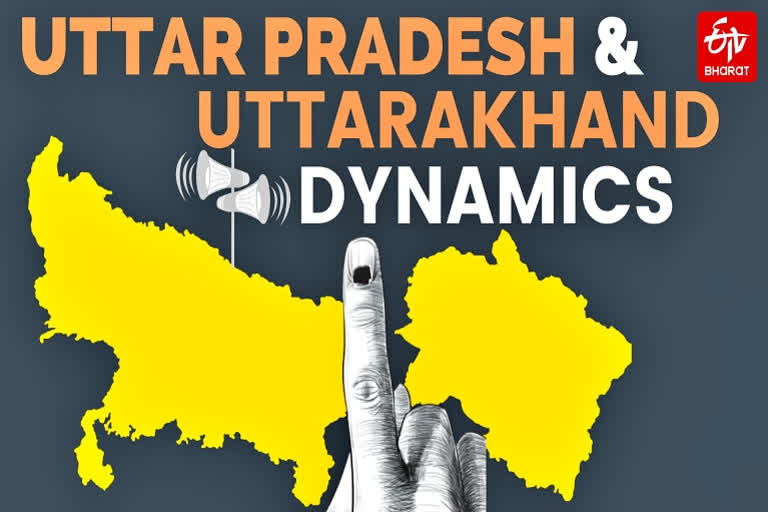New Delhi: On a day when votes for Goa and Uttarakhand Assemblies were locked up in ballot boxes, indications were that the Samajwadi Party-led Opposition alliance retained its lead in the second phase of polling in Uttar Pradesh on Monday.With challenges from Arvind Kejriwal's Aam Aadmi Party (AAP) and Mamata Banerjee's Trinamool Congress (TMC) petering out at the last hour, 40-member Goa Assembly seems to be heading for a neck to neck contest between the BJP and the Congress. A bigger surprise was thrown up in Uttarakhand where- some months ago - the ruling BJP was seen as fighting a losing battle.
The BJP leadership's decision in installing three different Chief Ministers within a space of one year had somehow given the impression that the saffron party was lacking confidence. Along with major voter concerns such as unemployment and inflation, the Pushkar Singh Dhami government had also not been able to find a solution to the continuing problem of mass migrations from the state. Several "ghost villages" have come up in the remote mountainous areas, as the younger population has been steadily migrating to the cities.
Also read: 10 CMs in 21 years: Uttarakhand goes to polls but will it ever see a stable govt?
At the same time, the state's demographic profile has been changing because of the inward migration of "outsiders" from Haryana, Uttar Pradesh, and Bihar. Further, because of Uttarakhand's "revolving door" Policy - when the incumbent government does not get a second consecutive chance - it was being assumed that the BJP was on a weaker wicket in this election. However, substantial damage control had been done by the saffron party towards the last phases of trial and is understood to have brought itself in the reckoning.
Focus on Uttar Pradesh
As for the high stakes political battle of Uttar Pradesh, heavy voter turnout in the 55 assembly seats of Monday's Phase-2 poll was indicative that the Samajwadi Party (SP) - Rashtriya Lok Dal (RLD) alliance had retained its lead in the 113 Western UP seats - a region in which the ruling BJP had scored big in the previous 2017 elections by winning 91 seats. In certain pockets in the nine districts of Phase-2, the voting percentage was around 65 to 70 per cent, indicating that the minority Muslim voters had cast their votes strategically by backing the SP, which is considered to have the best chance to displace the BJP from power in Lucknow.
Also read: UP Elections: The messaging of Phase-1 poll
While the voting trends are encouraging for the Opposition alliance in the state's Western flanks, the SP-led alliance is likely to face bigger challenges from the BJP in the remaining five phases of polling, as the saffron party leaders are likely to polarise Hindu votes against the perceived consolidation of the Muslim votes. The trend - suggesting that Muslims are voting strategically - was first witnessed in last year's West Bengal Assembly elections, when Muslims voted en bloc for the TMC, without wasting their votes on other "secular parties". Largely, Muslims have voted in favor of a candidate considered most likely to defeat the BJP in the past. But, since the West Bengal elections, a new trend has been visible: when the Muslims are backing a "secular" party or combination that is most likely to form the government in the state.
Counter polarisation
